

Select an option for more information. If you’re not sure, please phone 0800 248 148.
Are you seeing dim, glowing or flickering lights (or are you aware of fluctuating voltage)?
This could be a sign of a problem with the supply voltage and you should call us on 0800 248 148 straight away.
⚠️ As a precaution, keep clear of any metal objects and surfaces (just in case there's any 'stray' electricity) until our fault crew arrives. Please also avoid touching your switchboard.
1) Have you checked that the main switch (on your switchboard) is in the ON position?
⏵If it's off, turn it on if you can.
⚠️ Only touch the switchboard if it looks normal and you feel safe doing so.
2) Have you checked that the other switches (explanation below) are in the ON position?
There might be individual circuit breakers (switches) or fuses that have 'tripped' for safety due to overloading, causing a loss of power to those particular circuits. With modern switchboards, you can remedy this by:
1) Unplugging any appliances in the room/area that matches the label on your switchboard.
2) Flicking the corresponding switch back on. For more information, visit WorkSafe's website.
⏵Please try this if you're able to.
⚠️ Only touch the switchboard if it looks normal and you feel safe doing so.
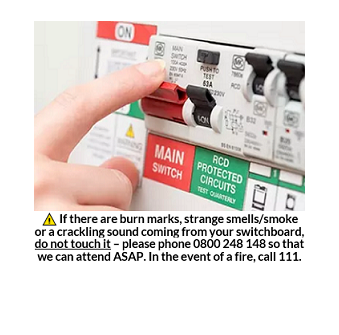
Also select this option if you've not been able to, or don't feel comfortable, carrying out these steps.
Great! Based on your answers, it sounds like you've restored power by turning the main switch (and any individual circuit breakers) back on.
If the problem persists, please contact a qualified electrician if you're the property owner, or your landlord or property manager if you're a tenant.
Based on your answers, you should contact your electricity retailer for further assistance.
If required, they will raise a request with us and we'll dispatch a fault crew as soon as possible.
Not sure who your retailer is? You can check on the Electricity Authority's website.
⚠️ If you're medically dependent, you should also follow your emergency response plan and contact your healthcare provider if the outage puts you at risk of harm.
In a medical emergency, call 111.
Wellington Lower Hutt Porirua Upper Hutt
Your local council can arrange for graffiti to be removed.
During times of peak demand, our control room might 'shed load' if we need to or if Transpower, New Zealand's power System Operator, asks us to. This helps prevent our network (and in some cases, the National Grid) from becoming overloaded. In short, it keeps the power on.
Load control involves us sending out an electronic 'ripple' signal that switches off the electricity supply to some domestic hot water cylinders. This means water won't be heated while we're controlling load, but any water already heated can still be used and will usually stay warm for several hours.
In return, consumers benefit from 'controlled' rates that offer a discount (as opposed to 'uncontrolled' rates that don't, but which don't allow us to carry out load control). You can contact your electricity retailer for more information about this.
In the unlikely event of a major load shedding scenario, we'll endeavour to update our website with what's happening.
How long have you been without hot water for?
⚠️ If you need medical or care assistance, please contact your health practitioner or carer.
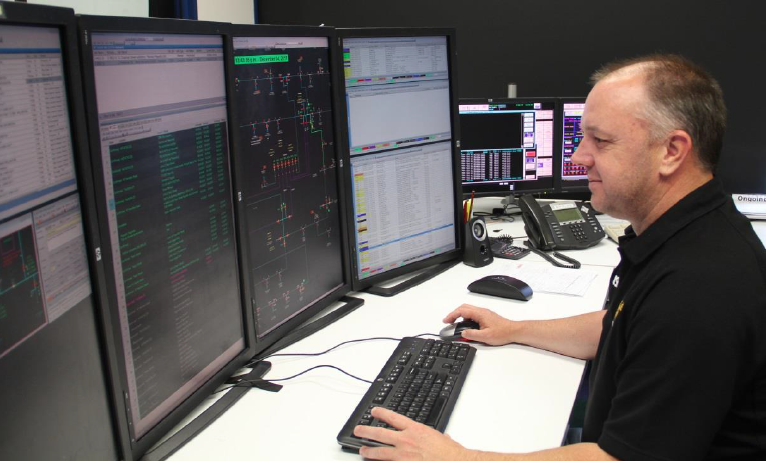
If you've been without hot water for 12 hours or less, this could be the result of a recent power outage or load shedding scenario in your area.
In either case, your hot water cylinder should soon reheat. If not, please contact your electricity retailer after 12 hours.
Not sure who your retailer is? You can check on the Electricity Authority's website.
If you've been without hot water for over 12 hours, please contact your electricity retailer in the first instance. They'll be able to diagnose any potential issues with your ripple control receiver (the device that receives our signals, which retailers are responsible for).
Not sure who your retailer is? You can check on the Electricity Authority's website.
You might also need to contact an independent tradesperson to check whether there is a problem with the hot water cylinder itself, or with the wiring connected to it.
This might include any of the following situations, but could also be anything you think might be dangerous.
![]()
Please check here (opens in new tab) first for any known outages.
If an outage affecting your area is shown, there's no need to report it
as we'll have already dispatched a fault crew to fix the problem.

Also select this option if your power's on but you're experiencing supply issues such as flickering lights.
You should contact your local council to report these.
Find out more about streetlights here (opens in new tab).
Wellington Lower Hutt Porirua Upper Hutt
For state highways, please phone New Zealand Transport Agency (Waka Kotahi) on
0800 4 HIGHWAYS (0800 44 44 49).

Find out about our Graffiti Prevention Programme.

Select an option for more information. If you’re not sure, please phone 0800 248 148.
Get connected to, or disconnected from, our network.
Select this option if you're planning to dig, build or do any other work around our equipment (or if you need access to it).
Anything else, from vegetation management to requesting the relocation of equipment. Check here if your request type isn't covered elsewhere.
If you need to ask us something.
If it looks like any part of a tree is touching our lines, please phone 0800 248 148 so that we can attend straight away. Otherwise, click 'Learn more' for information.
Includes builder’s temporary supply (BTS) connections.
Includes BTS to permanent conversions.
Unfortunately, we aren't able to allow anything else to be attached to our poles.
If the pole isn't ours, please contact the relevant pole owner. If it's a Chorus pole (look out for a green tag, yellow number plate, or Chorus identification label like in the photo below), you can contact their Network Services team on 0800 463 896 (option 3) or at [email protected].
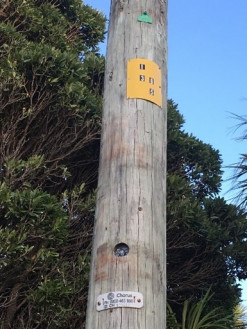
Alternatively, phone 0800 248 344.
In most cases, plans are automatically emailed to the requester straight away. However, if the proposed dig area is within 1.5 metres of critical underground cables, we'll need to supervise the excavation. In these cases, we'll let you know within two working days of your plan request.
⚠️ Under the Health and Safety at Work Act 2015, you must establish the location of underground services before commencing excavation. To do this, you'll need to engage a third party contractor to provide you with mark-out/location services once you've obtained plans (find out more here), then hand dig to confirm. You should also read WorkSafe’s guideline.
REQUEST ISOLATION OF AN UNDERGROUND CABLE
⚠️ You'll need permission from us if you're planning to dig within 5 metres of any pole or stay wire that's holding up our lines (apply for consent here) or build over the route of an underground cable (contact us for advice).
Apply for consent to dig within 5m of a pole
For excavations deeper than 1.5m, you might also need to notify WorkSafe.
This includes the likes of cable tunnels, substation grounds/buildings and switchyards, but most commonly relates to we* transformer rooms (indoor substations) in private buildings.
Supervised access to a controlled environment is a type of standover.
To get it, you'll need to apply for a Close Approach Consent.
Select this option if you'd like to request for any of our electrical equipment to be relocated.
Select this option if you’d like to request for any electrical equipment to be placed underground.
Select this option if you’d like us to assess a tree that you think might be within 4 metres of power lines.
Note: If you're looking to change where the power line from the pole connects to your property (the point of entry), you'll need to contact a qualified electrician in the first instance.
These are owned by we*. Please be aware that due to the extent of the work required, the cost for this type of request typically exceeds $1,000 per metre of line.
Known as a ‘service line’, this is the responsibility of the property owner it supplies. However, this type of request needs our input to change the point of supply from overhead to underground.
Given the nature of this work, we'll need to provide you with a quote to undertake what's required on our side.
Click the button to request a quote.
You can send us an email (or phone us, if you prefer) with any enquiries you might have. This could be anything to do with our electricity network and might include things like:
network capacity enquiries
information regarding electrical equipment (e.g. poles) on private property
enquiries about electromagnetic fields
ultra-fast broadband (UFB) status updates (where a we* pole is involved)
information on our programmes, such as Stay Safe and Graffiti Prevention
any complaints.
You should contact your electricity retailer for any matters relating to your contract with them, such as pricing, billing and metering. Your retailer can also help you with other things like queries about planned and unplanned outages.
Not sure who your retailer is? You can check on the Electricity Authority's website.
If you're working on your own property and only around the power line running from the pole to your home or business (the service line), please select 'Yes, but a service line'.
Based on the answers provided, you don't need to do anything else.
If you plan to dig or build around our network, please return to the 'What are you looking to do near our equipment?' menu to select the relevant option.
If you're only working around your private service line, you won't need our permission unless you also happen to be within 4 metres of our network lines. However, you'll still need to follow WorkSafe's guide to Working near low voltage overhead electric lines.
⚠️ You’ll need a temporary disconnection (isolation of the electricity supply) to safely undertake roofing, spouting, painting, water blasting, tree trimming, scaffolding or any other work around the power line from the pole to your home or business. You can request this via your electricity retailer.
In all cases, the safest possible option is to have the supply isolated while the work takes place.
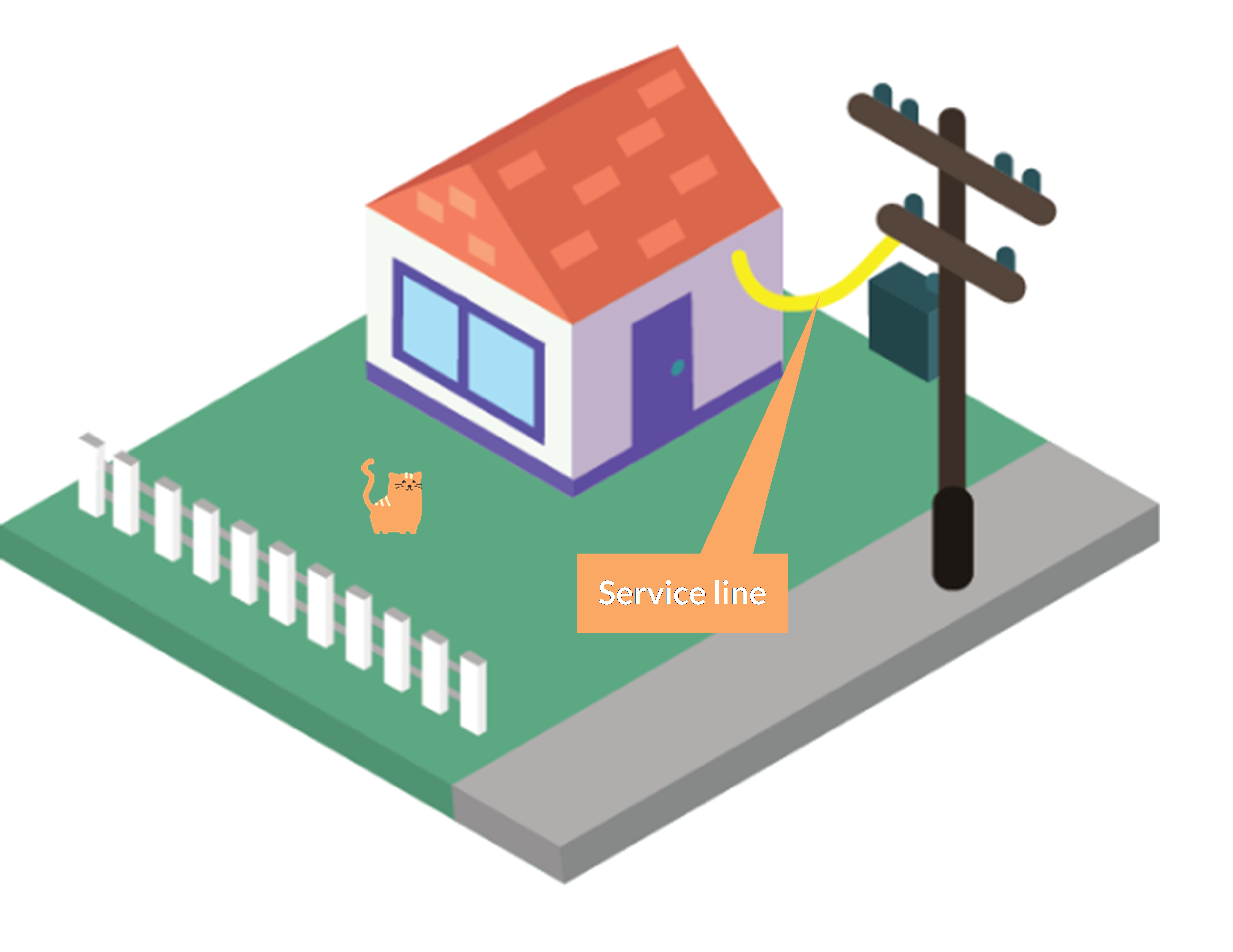
Only arborists authorised by Wellington Electricity are legally allowed to trim trees within 4 metres of our power lines (but no closer than 1.5m without isolation of the electricity supply). This is known as the Professional Only Zone.
You should phone us on 0800 248 148 (option 4) to see if your tree is eligible for a free first cut or trim. Alternatively, you can contact an authorised vegetation contractor of your choice.
You'll need to contact your electricity retailer to request this.
we* doesn’t charge for this service, but your electricity retailer might charge you an administration fee to process the request. Find out more here (opens in new tab).
- This free service is available on weekdays only. Please request a quote if you need a temporary disconnection on a Saturday, Sunday, or public holiday.
- We'll need at least three working days notice to carry out a temporary disconnection (unless we need to provide a quote – in which case, it will be longer).
- You'll need to be present when we attend.
Not sure who your retailer is? You can check on the Electricity Authority's website.
To apply, you'll need the following information:
We'll then either:
Scenario A – no network extension required
Refer you to an electricity retailer if it's unlikely to be necessary for us to extend our network. If this is the case, we won't need to quote you – instead, your chosen retailer will simply charge you a fixed fee for the connection.
or
Scenario B – network extension required
Instantly provide you with an expected cost (if possible), followed by a formal offer, then arrange for one of our contractors to carry out the work on our behalf. For larger builds, we might need to look into your request further and provide a bespoke price.
Either way, you'll need to engage your own electrician to install the necessary electrical equipment from the building to our point of supply. You should also speak to an electricity retailer of your choice about setting up an account (and electricity meter, if needed) for your new connection.
More information about this process can be found here (opens in new tab).

By continuing with an application, you:
If an easement is required, you also agree that:
By clicking 'PROCEED', you are confirming that you have read and understood the above disclaimer. Full terms and conditions can be found in the offer made by us/our contractor (if applicable).
You'll need to contact your electricity retailer to request any of the following services:
To change your connection from an overhead service line to an underground service cable, we'll need to provide you with a quote to undertake the work required on our side.
You can request this here.
Not sure who your retailer is? You can check on the Electricity Authority's website.
Known as a decommission or total disconnection.
You’ll need this to safely undertake roofing, spouting, painting, water blasting, tree trimming, scaffolding or any other work around the power line from the pole to your home or business.
You'll need to contact your electricity retailer to request a decommission.
Not sure who your retailer is? You can check on the Electricity Authority's website.
Find out more about decommissions here (opens in new tab).
If you'd like to decommission network assets such as our cables and substations, please submit a request.
This would usually only be needed for a non-residential consumer
supplied by a dedicated substation. Select ‘No’ if you’re not sure.
Given the nature of this work, we'll need to provide you with a quote to undertake it.
Click the button to request a quote.
You might need this if the line’s in the way of the work you’re planning to do.
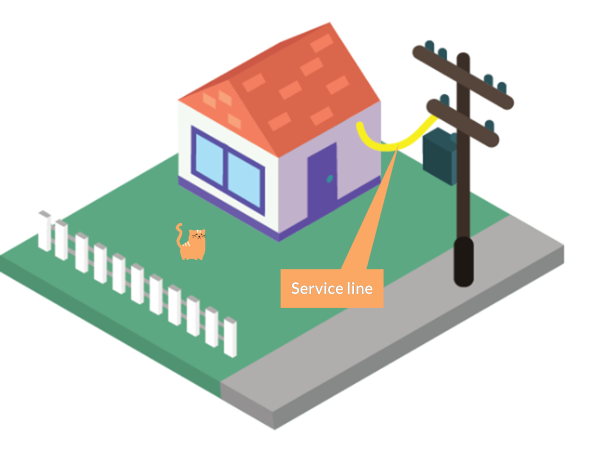
Given the nature of this work, we'll need to provide you with a quote to undertake it.
Click the button to request a quote.
If you’re planning to install distributed generation (DG) equipment at a property that’s connected to our network, you’ll need our approval first.
DG mainly encompasses solar (PV), wind, hydroelectric and liquid fuel (e.g. diesel), but can also include the likes of gas, biomass, thermal and geothermal.
If you need to work around overhead lines. For example, you might need to
operate machinery, transport or lift a load or manage vegetation.
If building anything – temporary or permanent – near or over our equipment (e.g. power lines and poles, pillars, substations and underground cables). Also select this option if you're looking to attach something to one of our poles.
This isn’t just roadworks – it includes things like fence building, landscaping or
gardening (including tree planting, but not minor gardening of topsoil),
concreting, pool installation, erecting a deck or carport, or laying a driveway.
If you need supervised access to a controlled environment like a substation (for example, if you’re a building manager looking to access a we* transformer room).
Once you've confirmed the circuit voltage(s) for the lines you're looking to build near, you must self-assess using NZECP 34.
*Qualified parties may include the likes of IAMSL, Power Solutions Ltd, WSP, and Beca.
You'll then need to email us a copy of the report you receive, which we'll review in line with Table 3 of NZECP 34 and advise whether construction is permitted, along with any conditions that must be adhered to.
NZECP 34 applies to temporary structures (including scaffolding) as well as permanent ones. Make sure you apply for a Close Approach Consent prior to erecting any structure that could involve working within 4 metres of our overhead lines or digging within 5 metres of a power pole, even if you know that the structure is compliant with NZECP 34.
If you're building something near our overhead lines and poles (within 8.5 metres – or less, depending on the voltage), you'll need to comply with the New Zealand Electrical Code of Practice for Electrical Safe Distances (NZECP 34:2001).
NZECP 34:2001 sets out minimum safe electrical distance requirements for overhead electric line installations.
Do you know the circuit voltage(s) for the lines you're looking to build near?
Although not covered under the New Zealand Electrical Code of Practice for Electrical Safe Distances, it is still important for us to make an assessment prior to any construction taking place around electricity substations and other equipment.
This is because we have a statutory right of access to our assets under the Electricity Act 1992, for maintenance purposes or in the event of a fault. The Electricity (Safety) Regulations 2010 also has provisions for the protection of our equipment.
Please click here to contact us for advice if you're planning to build within:
Otherwise, you do not need to contact us unless you have any questions.
If you need to access a substation (for example, a we* transformer room (indoor substation) for maintenance purposes), please request a Close Approach Consent for a standover.
Although not covered under the New Zealand Electrical Code of Practice for Electrical Safe Distances, it is still important for us to make an assessment prior to any construction taking place above underground cables.
This is because we have a statutory right of access to our assets under the Electricity Act 1992, for maintenance purposes or in the event of a fault. The Electricity (Safety) Regulations 2010 also has provisions for the protection of our equipment.
You must request underground cable plans through beforeUdig, then establish the location of buried services before commencing excavation. Find out more here (opens in new tab).
Parties such as road controlling authorities (RCAs) and some telecommunications providers (telcos) have arrangements in place with us for them to install equipment on our poles.
We typically don't permit any other party to attach items to our poles due to network reliability and safety considerations, but we might be able to provide special permission if you're an organisation providing similar essential services to those of RCAs or telcos.
This includes those wishing to attach items relating to traffic safety (like convex mirrors or temporary traffic signs), but you'll need to speak to your local council about these first.
Do you meet the above criteria?
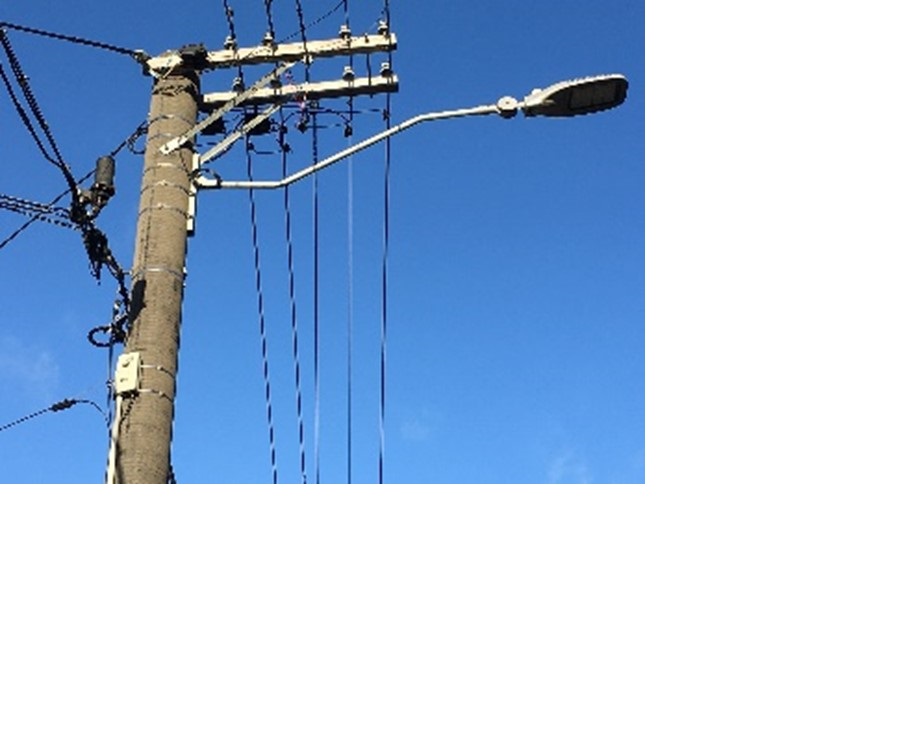
To help improve our service, what feedback can you give us about this page?